Newsletter
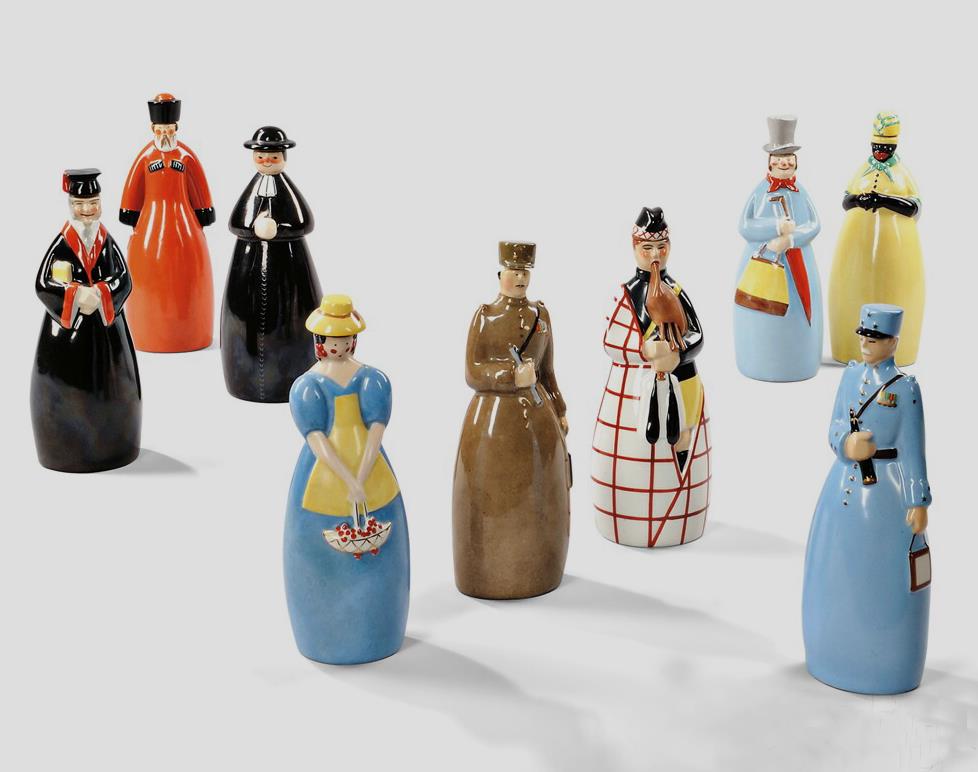
Nine Robj Decanters, Glazed Ceramic, c. 1928-1931, The anthropomorphic containers in various colorful glazes represent: a French general (a paper label with image of General Foch on back), African woman, professor, Russian peasant, bagpiper, a general with field telescope, priest, a beauty with basket,and a gentleman in a top hat, all marked Robj Paris Made in France, approx. ht. 11 in. From the Art Deco Coda Collection from Corinne Davidov
The production of Robj porcelain figurines and other objects reached the height of their popularity in the late 1920s and early 1930s. Jean Born (Robj) and his partner Lucien Willmetz, managed a successful retail store at 3, Cite d’Hauteville in Paris. They actively encouraged Art Deco and Cubist ceramic designers and artists, and provided a showcase for their production works. Robj sponsored an annual competition of “art deco trinkets” between 1927 and 1931 as a means of discovering new designers. Robj was not a manufacturer – his porcelain pieces were commissioned and produced by various suppliers among them Manufacture de Sèvres, Villeroy et Boch in Luxemburg, several factories in Limoges and a decoration workshop with a muffle furnace in Boulogne-sur-Seine.
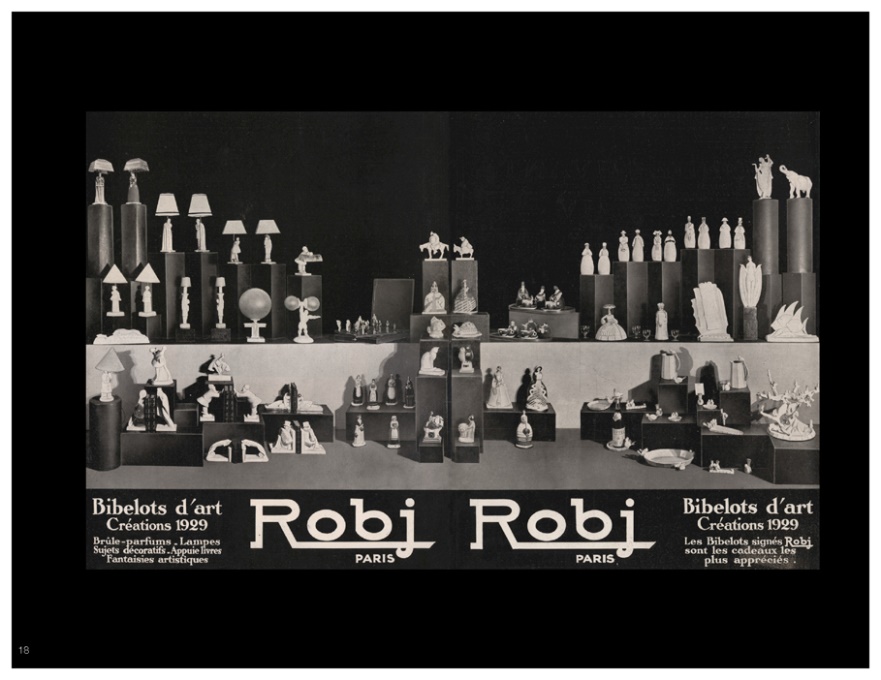
Advertisement of a selection of Art Deco ceramics from Robj.
Their most successful objects sold in the retail store were porcelain figures, lamps, perfume lamps, ashtrays, bottles, bookends, and kitchen items. The production of unique liqueur-decanters in 1928 set new levels of popularity and sales. Following closely in 1929, and with equal popularity came the production of tobacco-pots. Elegance, stylishness, originality, and skillful craftsmanship were vibrantly represented in each object. The spirit of liveliness and inventiveness, and the combination of themes and subject-matters must also be recognized for the amazing success of Robj.
Readers interested in viewing the full range of Robj Paris art deco ceramics will find information at https://www.robj.ch. This web page was created by Swiss designer Christian Cueni to display what may be considered the largest collection in the world of Robj trinkets or “bibelots”. The Two Red Roses Foundation’s limited collection of Robj objects and other vintage Robj inspired French and German Art Deco figures, lamps, perfume lamps and bonboniers will be prominently shown in custom made glass display cases in the MAACM café, restaurant and bars.
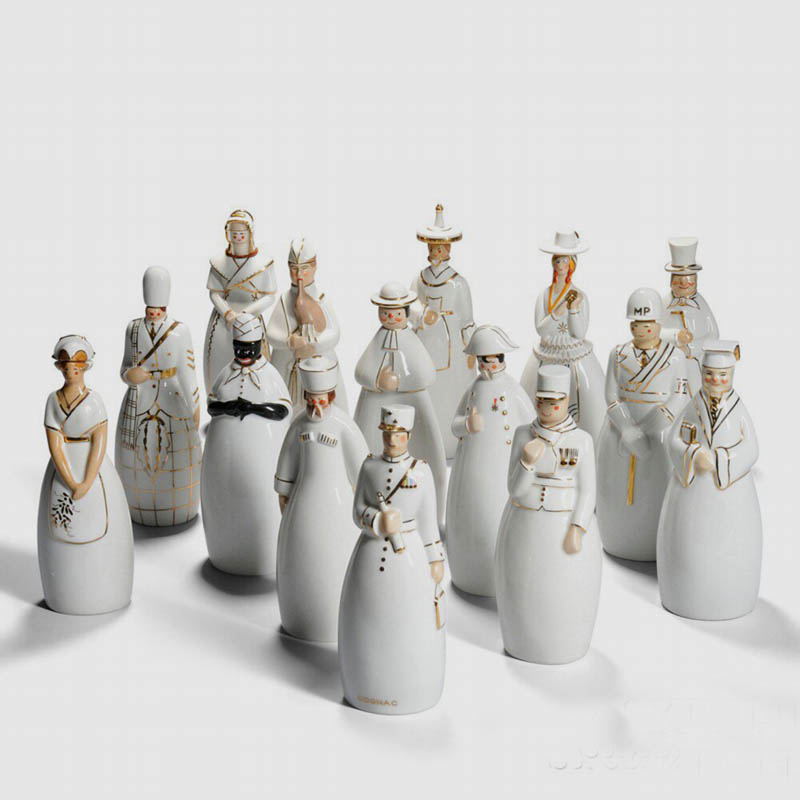
Fifteen Robj Liqueur Decanters, Glazed Ceramic, France, 20th Century, The anthropomorphic containers in white glaze with gold highlights represent: a kilted Scotsman, French soldier, African woman, military policeman, Russian peasant, bagpiper, priest, gentleman in a top hat, general with field telescope, Napoleon Bonaparte, professor, and four women in traditional folk dress representing Champagne, Brittany, Bresse, and Mont Cenis, marked with various Robj stamps, some also marked Limoges, approx. ht. 11 in.
The overwhelming success and popularity of the Robj production prompted others to imitate the Art Deco imagery of these whimsical objects and today many Robj inspired porcelain figures and other trinkets can be found by various French potteries. Georges Bastard, who opened a store in 1912 at 16 rue Sainte-Cecil in Paris, commissioned E. Margerie, who had designed many of the Robj objects, to produce a line of whimsical anthromorphic liquor decanters. TRRF is delighted to own this rare set of sport figures.
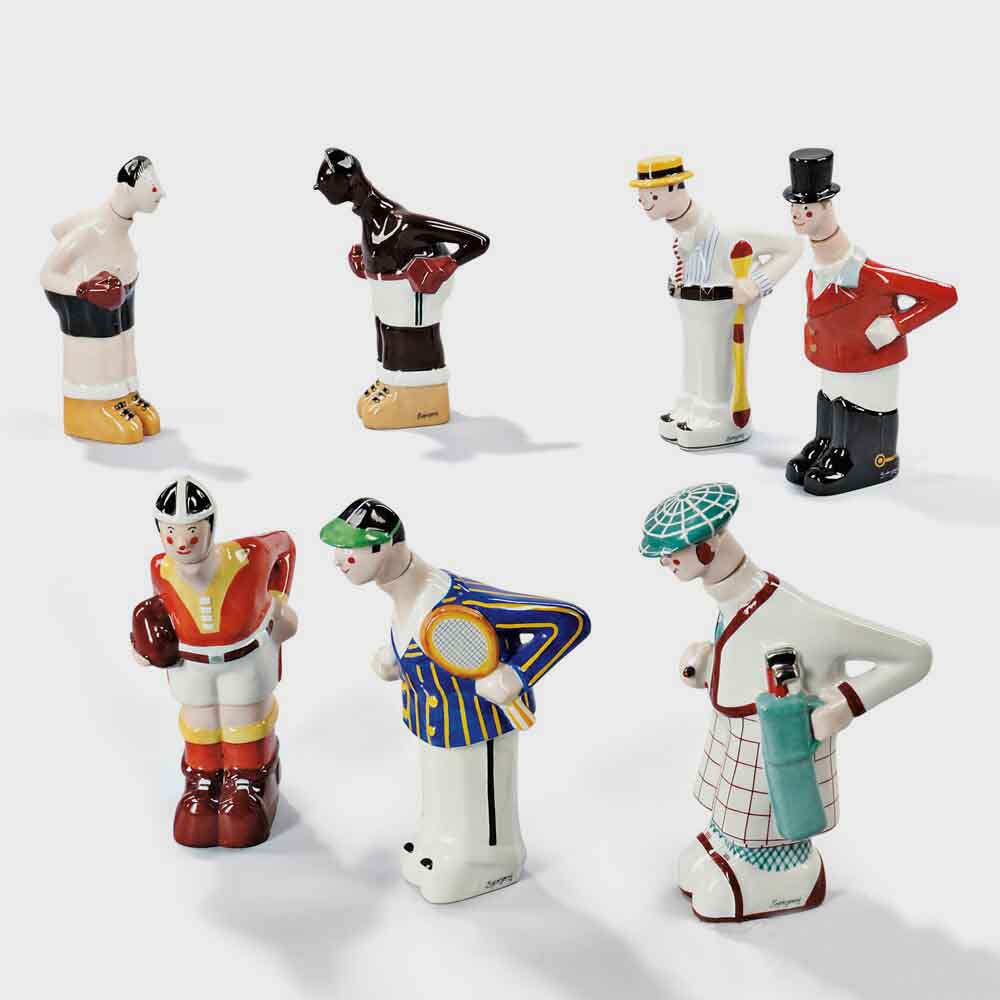
Seven Sportsmen Ceramic Decanters, Glazed Ceramic, France, 20th Century, A very rare set of anthropomorphic containers representing sports figures: tennis player, rugger, huntsman in his "pinks," golfer, black boxer, white boxer, oarsman, all decorated with various colorful glazes, all signed E Margerie. Made in France, by Georges Bastard. Editeur Paris France, ht. 10 1/4 to 11 1/2 in.

Rendering of the main entrance of the museum retail store.
The MAACM Store and Cafe
There were major design advances to MAACM amenities. A prestigious retail design consulting firm, well known for designing the new Boston’s Restoration Hardware gallery, was commissioned to assist us in creating the look and feel of the museum store and café. These venues will build upon the relationship between the collection and the building architecture to enhance the visitor experience
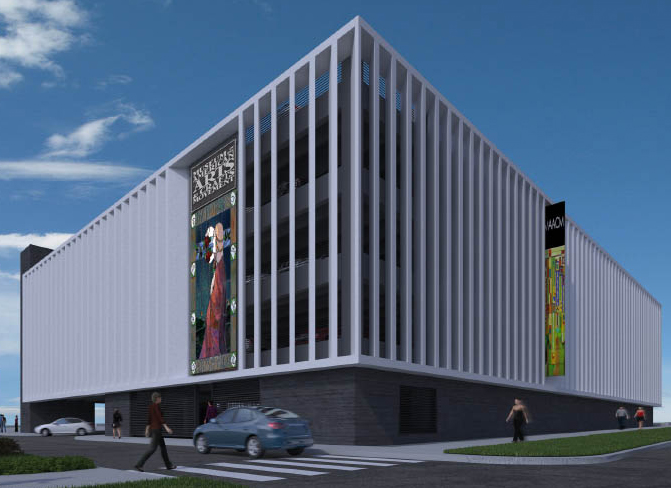
Rendering of the southeast corner of the parking garage. Special LED lights, strategically placed along the bottom of soaring vertical fins, produce dramatic and programmable visual effects at night by enveloping the garage in a rainbow of vibrant colors making the garage a visible landmark in the city of St. Petersburg.
After more than two years in the design and construction phases, and the forerunner to museum construction, the parking garage has received its Certificate of Occupancy. The imposing five story facility with 303 parking spaces was designed to complement the MAACM and its high design standards and not be just another dreary parking garage. With impressive poured in concrete vertical fins, designer steel patterned mesh, and an impressive LED lighting system that washes the building in dramatic multi-colored light at night the garage exceed expectations and sets the stage for museum construction set to begin early spring 2016.
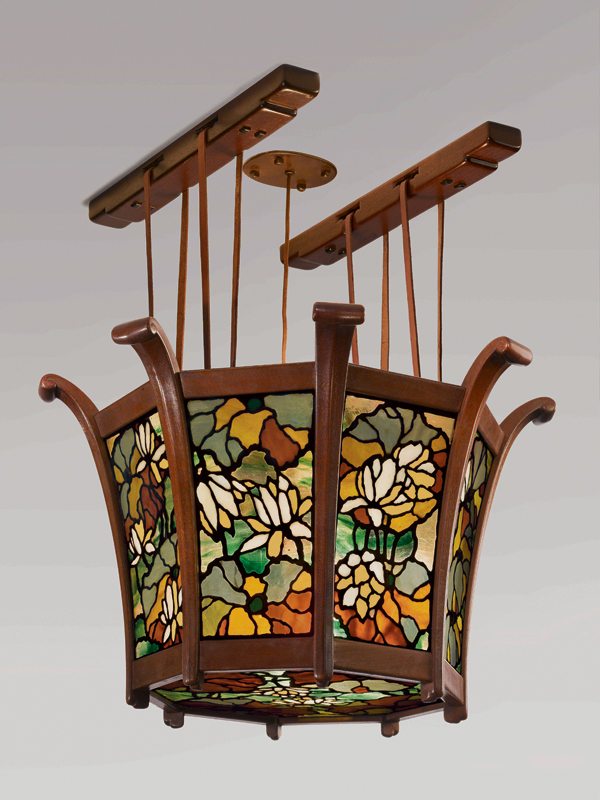
Greene & Greene, Lotus Lantern from the Robert R. Blacker house, Pasadena, California, c. 1907, various hardwoods, leaded opalescent and iridized cathedral glass. Two Red Roses Foundation collection.
Titled “Radiance: Arts and Crafts electric lighting: beautiful, useful, inevitable” and authored by David Cathers with contributions by Susan Montgomery, should be available for sale in Winter 2016. The following excerpt is from the book’s introduction:
“As far as I am able to tell, no book has yet been written devoted solely to American Arts and Crafts light fixtures, or to Prairie School lighting. The subject has been explored in many excellent surveys, monographs, and exhibition catalogues, for instance on the work of Dirk van Erp, Gustav Stickley, Newcomb Pottery, the Roycroft Shops, Charles and Henry Greene, George M. Niedecken, Stickley Brothers, the Charles P. Limbert Company, and others, and those and other writings have been essential sources of information, insights, and inspiration to me during the writing of this book. All of that foregoing work has treated lighting as one of several subjects, among them metalwork, furniture, ceramics, interior design, and architecture. This catalogue, however, is only about lighting and attempts to cover the topic more fully than has been possible in books with a broader scope. It is such a rich subject that it deserves book-length treatment, and the extensive collection of the Two Red Roses Foundation has made this project possible.